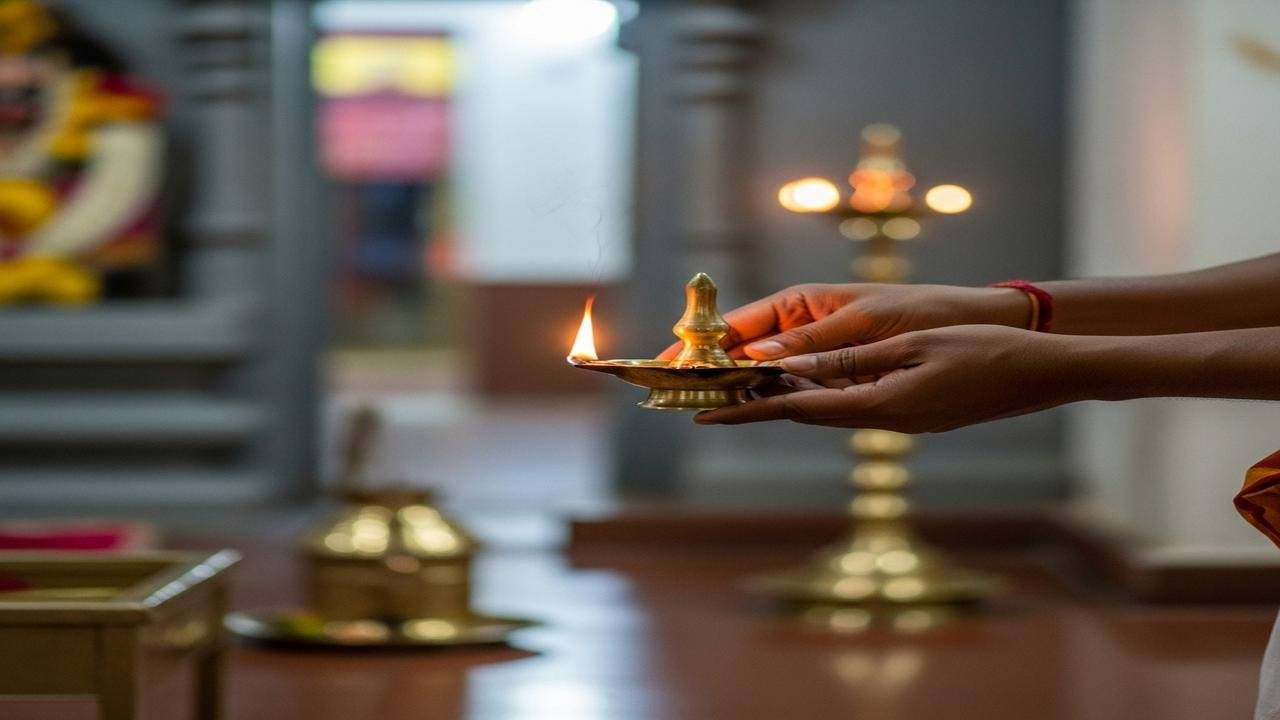What a Tiny Sacred Flame Reveals About Hindu Rituals

The Sacred Flame: The Symbolism of Fire in Hindu Rituals
When I was a child, I would watch my grandmother light a small clay lamp each evening. The wick drank the ghee and the flame bent slightly, as if listening. That simple glow filled the room with warmth and a gentle hush. Little did I know then that the same tiny flame linked our home to ancient rivers of thought, prayer, and ritual—the long story of fire in Hindu life.
Fire, or Agni, is one of the oldest characters in the Hindu story. In the Vedas, Agni is both a god and a force. He is the messenger who carries offerings to the gods, the witness who sees vows and marriages, and the purifier who burns away what is impure. In rituals, fire stands between the human and the divine, transforming what we give into blessings that return to us.
There is deep symbolism in how fire is used. The flame’s light represents knowledge and the removal of darkness—ignorance, fear, despair. The heat is the inner energy, or tapas, that awakens courage and discipline. Smoke, rising upward, becomes the visible prayer, connecting earth and sky. Even the act of feeding the flame with clarified butter or herbs becomes a teaching: small, sincere offerings can be carried to the heart of the sacred.
Historically, fire rituals—yajna and havan—were central to community life. Ancient fire altars were carefully designed, and priests chanted verses that shaped the ritual like a woven cloth. These were not mere ceremonies; they were ways to order the world—invoking rain, health, prosperity, and social harmony. Agni’s presence sanctified agreements, births, and marriages. In time, the home altar and the temple lamp made the sacred flame intimate and personal, bringing the grandeur of Vedic rites into daily life.
Today, the flame still bridges past and present. In weddings, the couple circles the sacred fire, promising to walk life’s path together. In funerals, a flame transforms the body, reminding us of life’s changing nature. During festivals like Diwali, thousands of lamps bloom across homes and streets, expressing hope and the triumph of light over darkness. In temples, the aarti—the waving of flame before the deity—becomes a moment when the community breathes together and receives sacred light.
There is also a spiritual, inner meaning. In yoga and devotional practice, Agni points inward to the will that burns away laziness and doubt. The idea of an “inner fire” helps seekers kindle discipline, compassion, and purity of heart. This is why many elders speak of maintaining a steady lamp or daily offering: it is training the soul to be attentive and kind.
Practices surrounding fire are simple yet profound. A few steps commonly followed in a home havan include:
- Preparing a clean space and arranging small offerings like rice, herbs, and ghee.
- Lighting the flame with care, invoking Agni with a short prayer or thought.
- Offering items into the fire with intention, each offering carrying a wish or a surrender.
- Listening to chants or silent prayers as smoke rises, then closing with gratitude.
Modern life brings questions: how to honor tradition while caring for the environment? Many families now use sustainable materials, smaller fires, or symbolic lamps. The heart of the practice remains—attention, devotion, and the wish to transform.
Conclusion
Fire in Hindu rituals is more than a physical flame. It is a living symbol of transformation, connection, and light. When we light a lamp with respect, we join a long human habit of turning toward warmth and wisdom. May the tiny flame you offer help clear a corner of darkness in your life and steady the light within.
